The Best Axe Brands At All Prices Points
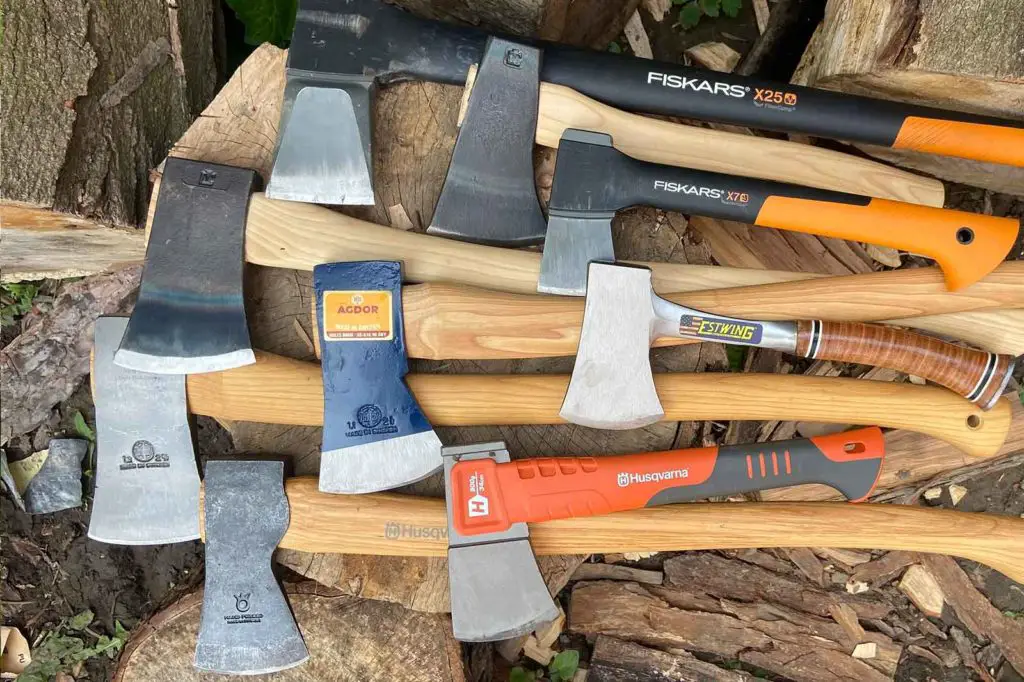
You don’t need to break the bank to buy a good-quality axe. There are generally 4 “tiers” of quality and price, and I will do my best to explain what you can expect and the best axe brands within each.
Price alone is not a full indicator, as there are some expensive crappy axes out there. But, all the axes in this article have been bought and used by me (for years). So hopefully, it can help steer you in the right direction.
This is just a hobby, but if you buy through a link I may get a commission that supports the site. Thanks!
Avoid Cheap Off-Brand Axes
You’re just going to regret it.
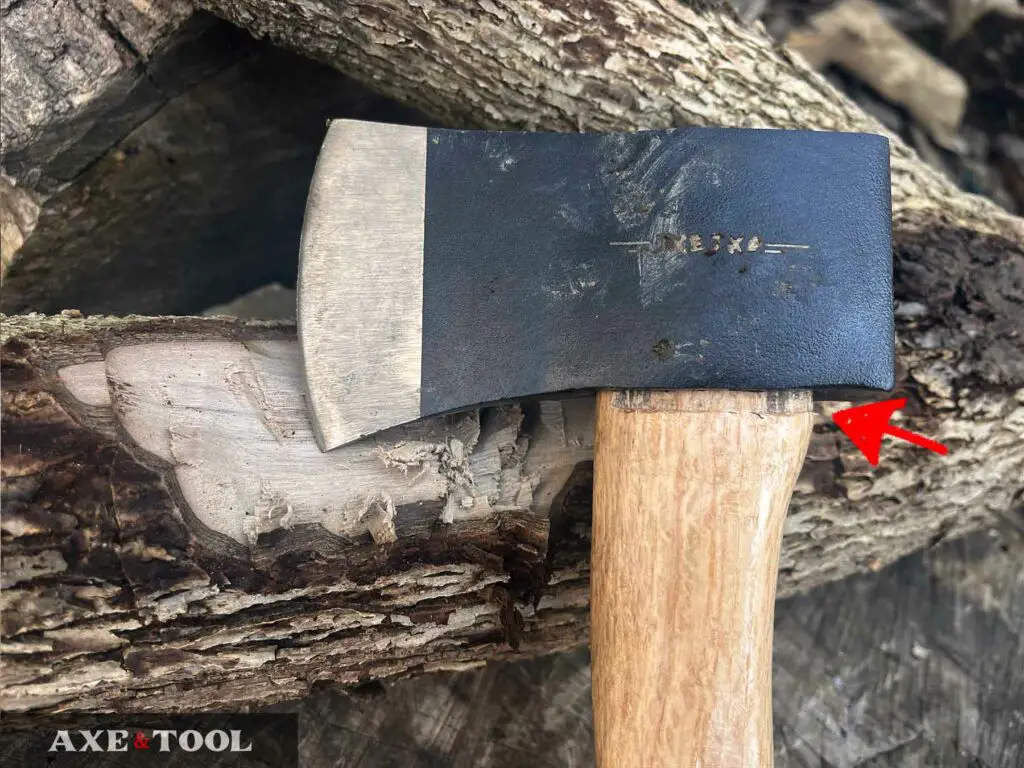
I’m not saying you have to spend a lot of money for a decent axe – but don’t waste your money on the cheap generic axes that flood sites like Amazon or Walmart. Pay a little more for a decent axe, and it will last you years and perform better.
The wood handles are brittle and poorly shaped, the composite handles are weak, and the steel is soft.
I have tried them, and they may not even last you a full camping season or even one use. I have seen handles and heads break or come loose after a single swing.
The Rare Good & Cheap Axe

When it goes on sale – The Cold Steel Trail Boss is a surprisingly good forest axe that can be nabbed for cheap. It has a well-shaped chopping head and is well-made. Although the handle comes quite fat, varnished, and covered in stickers.
I have seen surprisingly low prices when it’s on sale on Amazon, and it can be a pretty damn good deal.
High-value Axes ($50-$120)
These are the axe brands I recommend most. They are made by quality companies, perform well but don’t break the bank.
Fiskars Axes
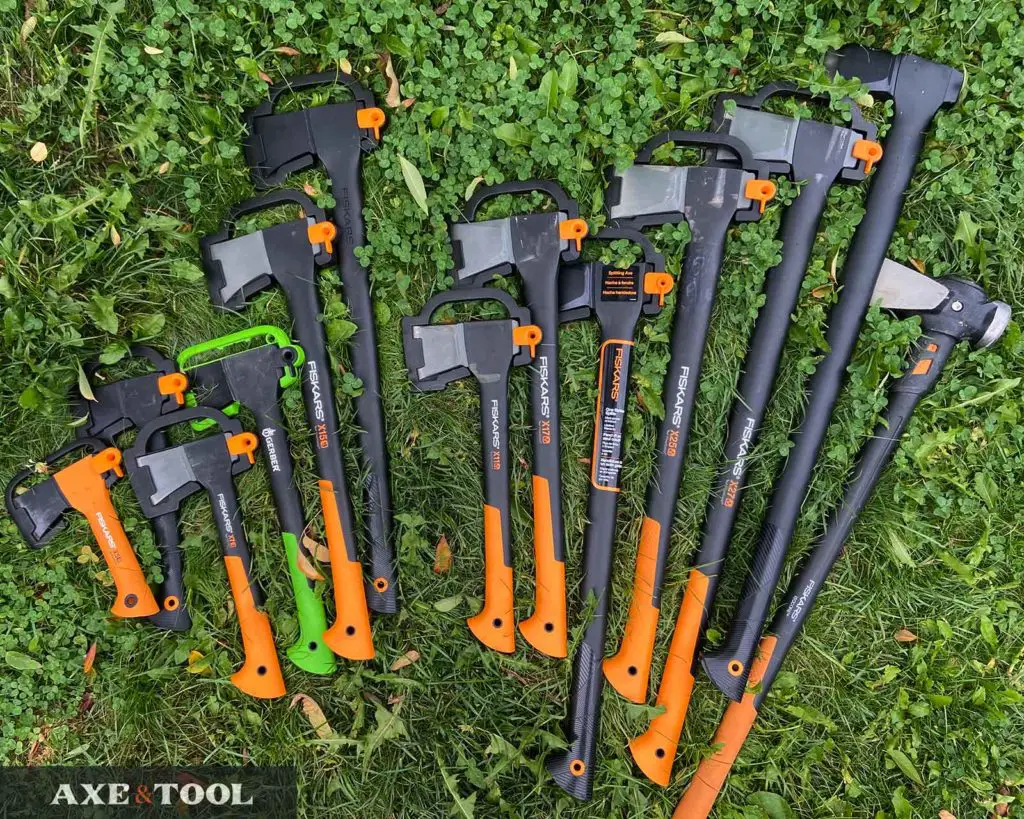
Fiskars axes are an easy choice – they come sharp, have nearly indestructible composite handles, and require almost no maintenance. Plus they have a pretty smart sheath solution. Given all that, they are surprisingly affordable.
The steel is a little soft, so they need sharpening after some use – but these really are a good choice for people who need a tool that just works.
Honestly one of the best features is the low maintenance. You can leave them in a vehicle, shed, or garage, and not care. Plus, they also perform well.
Fiskars has a wide range of both chopping and splitting axes (15+ models) from 9″-36″. Because there are so many we have a couple of articles to help you pick: How to choose a Fiskars axe.
Pros
Cons
Fiskars Splitting Axes

Fiskars are the best-value splitting axes for the money. The specialized flared head is a really strong design, and the composite handle absorbs shock, won’t be damaged by overstrikes, and can be used to help pry stubborn wood apart.
Fiskars is my go-to for splitting most of the time. They just work. What can be confusing is picking the right model – they offer 8 different splitting axes.
I recommend the Fiskars X27 as the best splitter for most people – but if you want to compare options, I have an article to help you decide which Fiskars splitting axe is right for you.
Fiskars Hatchets
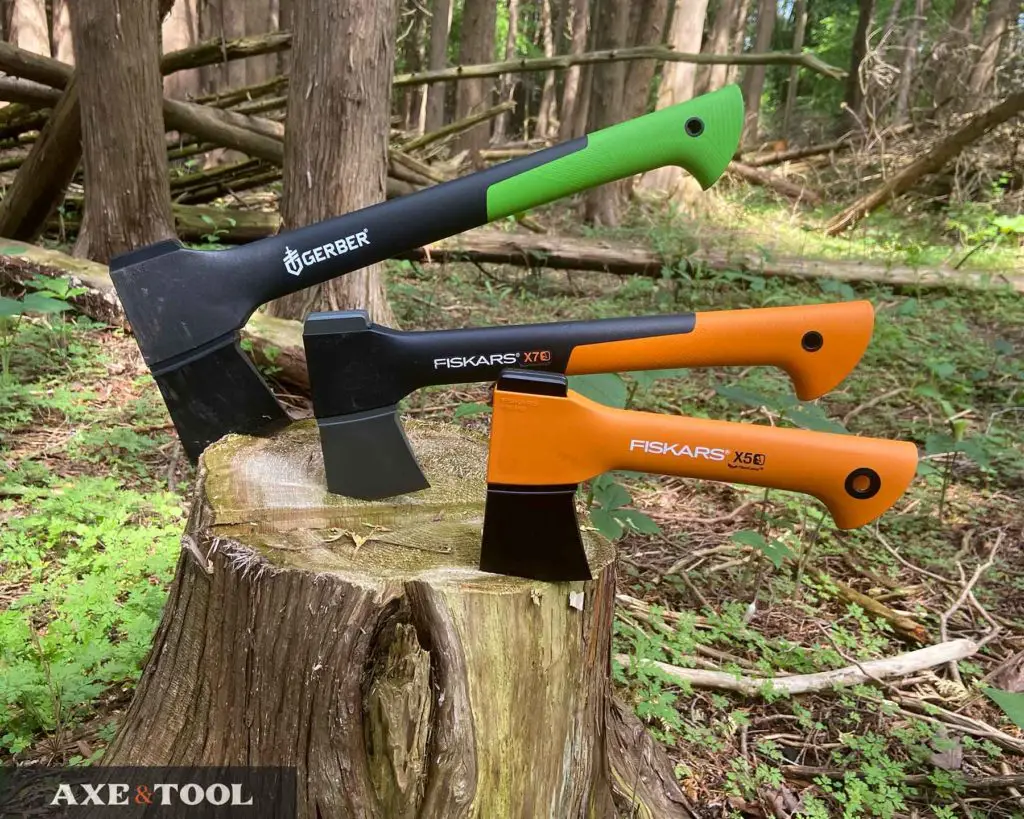
The chopping axes are great “general-use” axes. They have a wedge-shaped head that can both chop and split quite well. The composite handle makes them very light as well. This makes the hatchets great for camping and kindling.
They offer a full range of hatchets, and almost certainly have one tailored to what you need. I have a full comparison article with lots of pictures, to help
Council Tool Axes
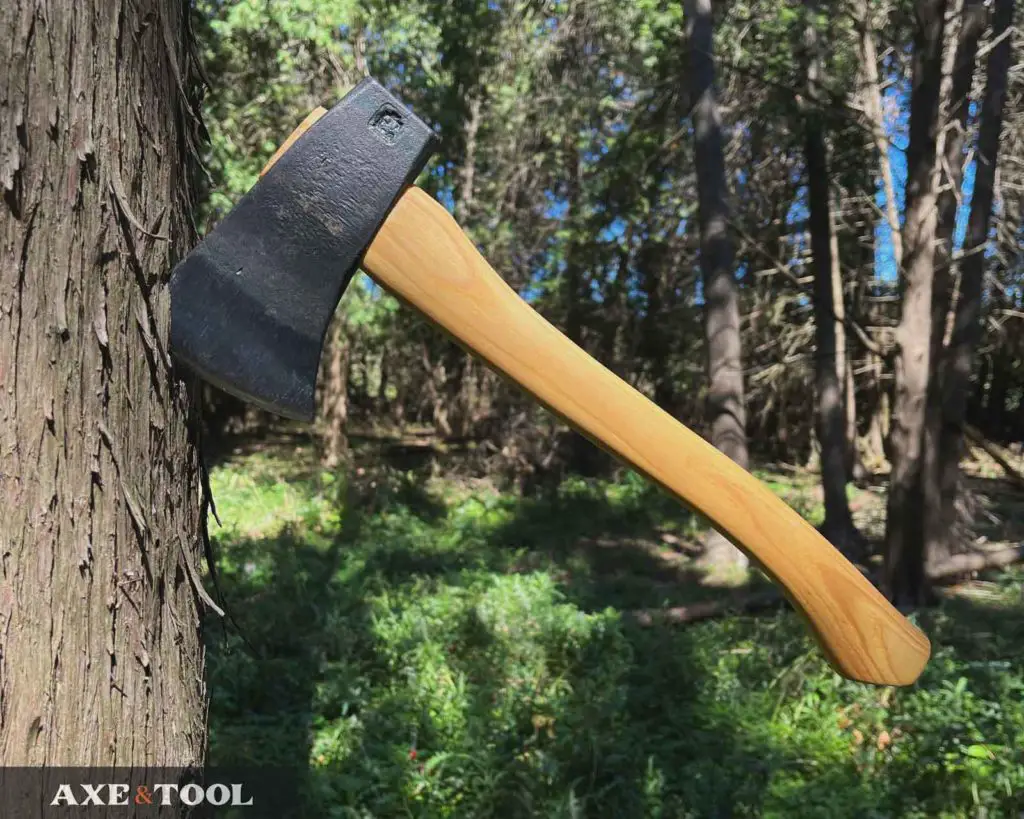
Council Tool makes classic American axes. They are well-designed, and well-made with hickory handles and 1060 Steel – and made in the USA.
The Sport Utility line is very affordable, and performs great. The heads are simply shaped and blued, and the wood seems pretty quickly sanded. But the edge is good, and a little sanding and oiling on your end will make it look and feel much nicer.
Council actually manages to have nice comfortable and thinned handles on affordable axes.
The Railsplitter line has some more specialized options and comes with an iconic red-painted head.
Council offers several models and versions, including full-size Jerseys and double bits.
Pros
Cons
Note: These axes can be almost twice the cost outside the US, so the value isn’t quite as high internationally.
The Classic “Boy’s Axe”

The 28″ Dayton Boys axe is an excellent work axe and is super popular. It is a great feller and chopper for mid-size trees and branches up to about 12″ wide. But while it can do smaller splitting tasks, the thin blade is not as well suited for that job.
It has a nice slim handle, and a good edge profile – even if it doesn’t come shaving sharp. It’s hard to beat the value of this axe if you live in the US.
Council axes don’t come with a sheath as default. They have an aftermarket one for like $20, but I don’t love it – you can find much nicer ones on Etsy.
An American-Made Splitting Axe

The Council Tool 5lb Splitting Axe is probably the best-value wood-handled splitting axe on the market. And the only mass-produced splitting axe made in the USA.
A Great Bushcraft Axe
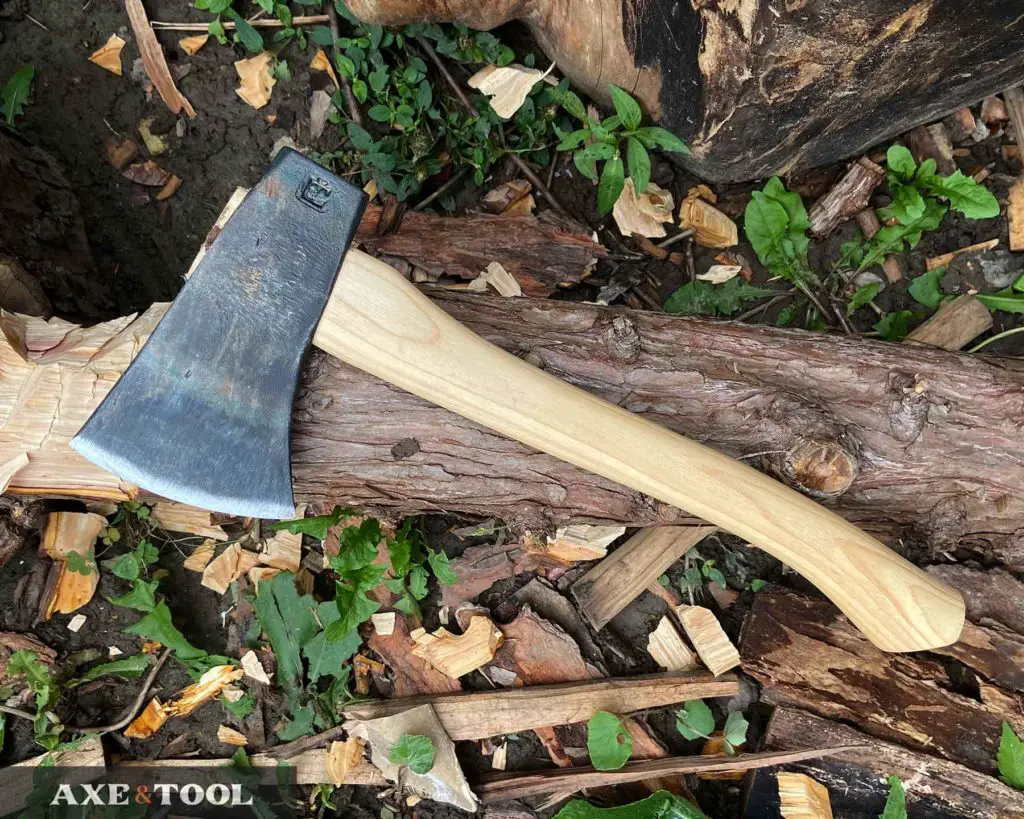
I really love this axe. The Flying fox is a 16” hatchet that has a wide thin blade that can be used for carving, and chopping and can still split kindling. Plus, the back of the head (poll) is hardened for hammering. It is an awesome and affordable bushcraft or camp hatchet.
Husqvarna Traditional Axes
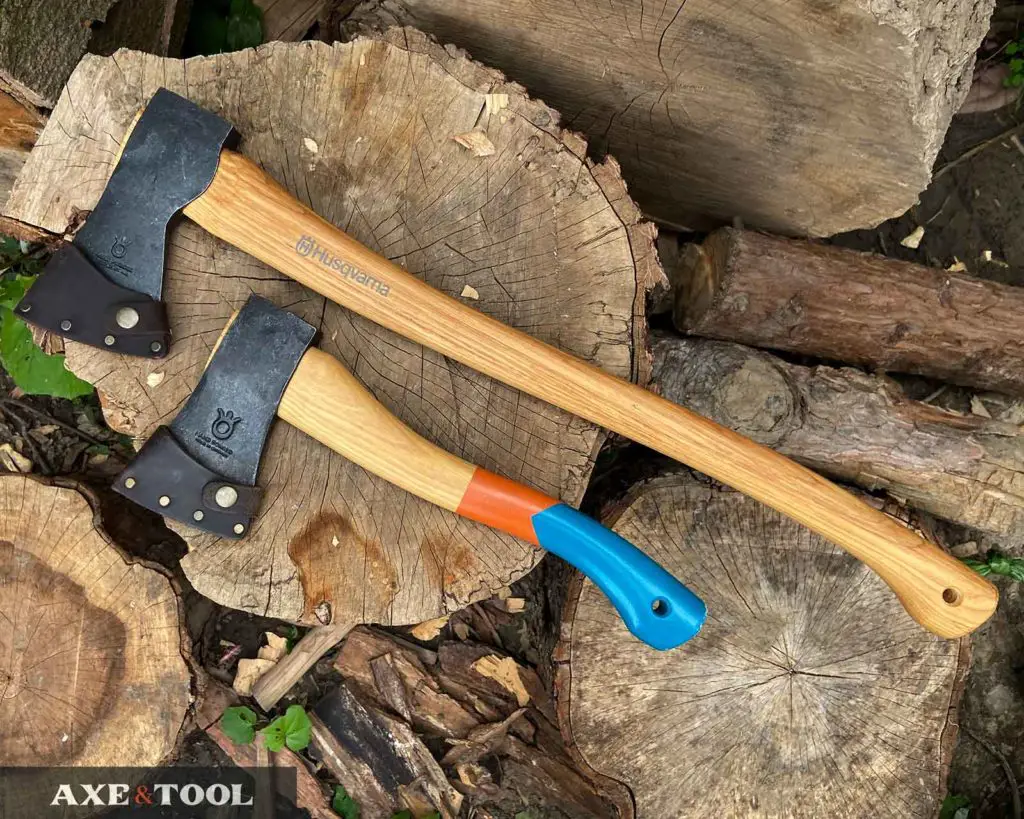
A small line of affordable traditional Swedish “style” and composite axes.
UPDATE: As of 2022, it seems Husqvarna has been moving at least some of its axe production out of Sweden. I have seen an example of a splitter with a tag that claimed “Made in Italy” (likely Prandi).
While I can’t confirm if this impacts all models or all regions, it is something to be aware of – but they still do specify “Hand Forged”.
The traditional line has a similar design to more expensive Swedish axes. They are hand-forged and come with a leather sheath (not welted). The handles are quite thick, and the head may need sharpening, but it’s at about half the price of the similar premium Swedish options.
You will certainly need to do work to get these axes up to the same level as the premium axes – but it’s doable yourself. Sharpening the blade, and doing some work to thin/shape the handle.
I think these are really good value axes, and the hatchet is perfect for camping. The head is heavier than most other hatchets which makes it great at splitting firewood on the campsite.
Pros
Cons
Husqvarna Composite Axes
The composite line is similar to Fiskars axes, with a a durable wedge-shaped head and composite handle. But, they are designed to take more abuse. They have a hardened pole that allows them to be used for hammering if needed and a reinforced handle near the head.
They are often used as chainsaw companion axes for banging wedges or versatile splitting axes.
The coating on the blade makes these axes seem very dull at first, but a few good whacks will expose the roughly sharpened edge. Usable, but as refined as Fiskars.
These axes are not quite as good choppers as Fiskars in my opinion, and you feel a little more vibration during use. But they split great, and hardened poll is a big advantage in some settings.
Pros
Cons
Note: These composite axes are sold under the Gardena brand in the UK for some reason.
Estwing Axes
Estwing offers a small range of all-steel hatchets and chopping axes (26″). The all-steel design is great for storing in a vehicle or seasonal property.
They have a slender flared head design that performs well when chopping, and is okay for campsite splitting, but doesn’t come particularly sharp. They have a leather or rubberized grip and come with a nylon sheath.
A lot of people love these hatchets, and they are certainly proven by a long track record. But personally, I don’t like all-steel axes (which is why this one hasn’t been used much). I find them uncomfortable, cold in bad weather, and awkward to choke up on.
The classic 14” Sportsman is the iconic Estwing axe, but the 18” camper is a more capable all-around option. They are quite affordable, and American-made.
Pros
Cons
Agdor Axes
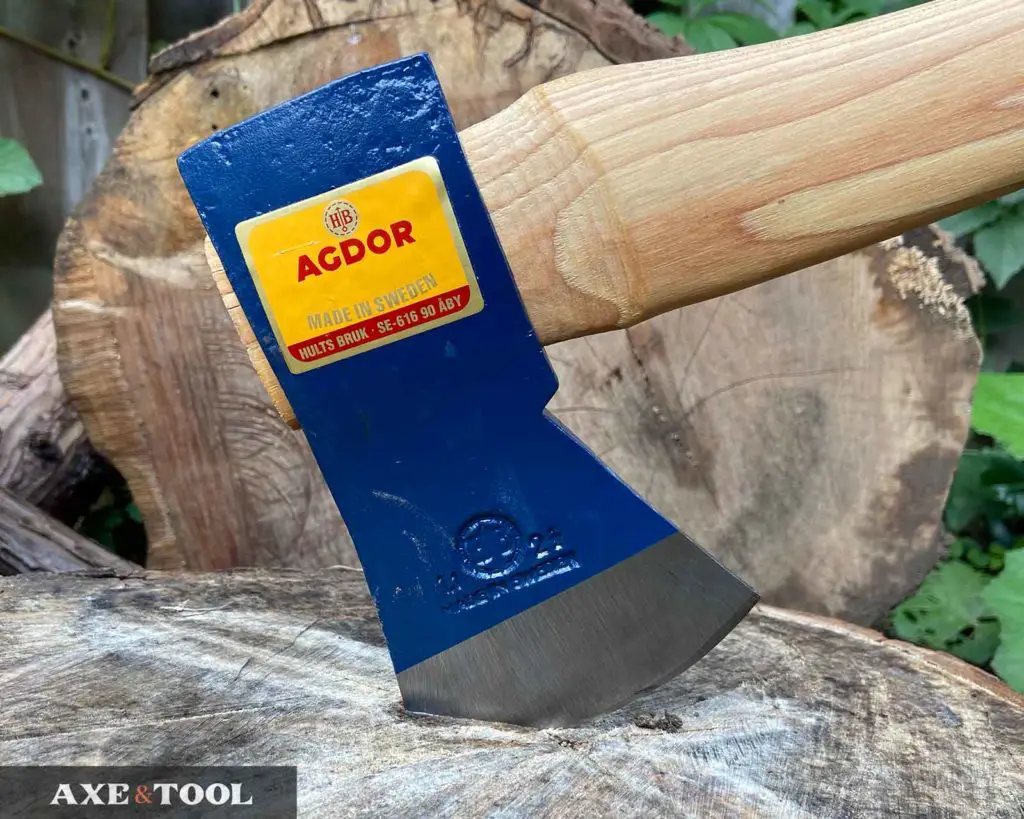
My favorite. Great traditional all-around axes that look and feel a step above the rest in this group.
They all come with a brilliant blue painted head, and have the same hard Swedish steel as the premium axes, but come in larger American-style felling heads which are great for all-around use. They also include a nice American-made leather sheath (Only in the US).
If you are interested, I have more details on the Montreal vs Yankee patterns.
Obviously, the price is higher than the other brands in this grouping, skirting much closer to the premium end of the spectrum, but they get extra tooling time, better steel, and nicer sheaths.
Extra attention has been taken to grind slight tapers in the top and bottom of the blade – which is a nice touch that helps with chopping, splitting, and freeing your axe. The council tool axes don’t put this much detail in, which is why they are cheaper.
The actual sharpening is still quickly done, and the handles are very fat. But these are the two easiest things for you to fix (if you care). The hang is clean and tight, and the handles are smooth and oiled.
Pros
Cons
Hultafors Standard Axes
(Outside the US)
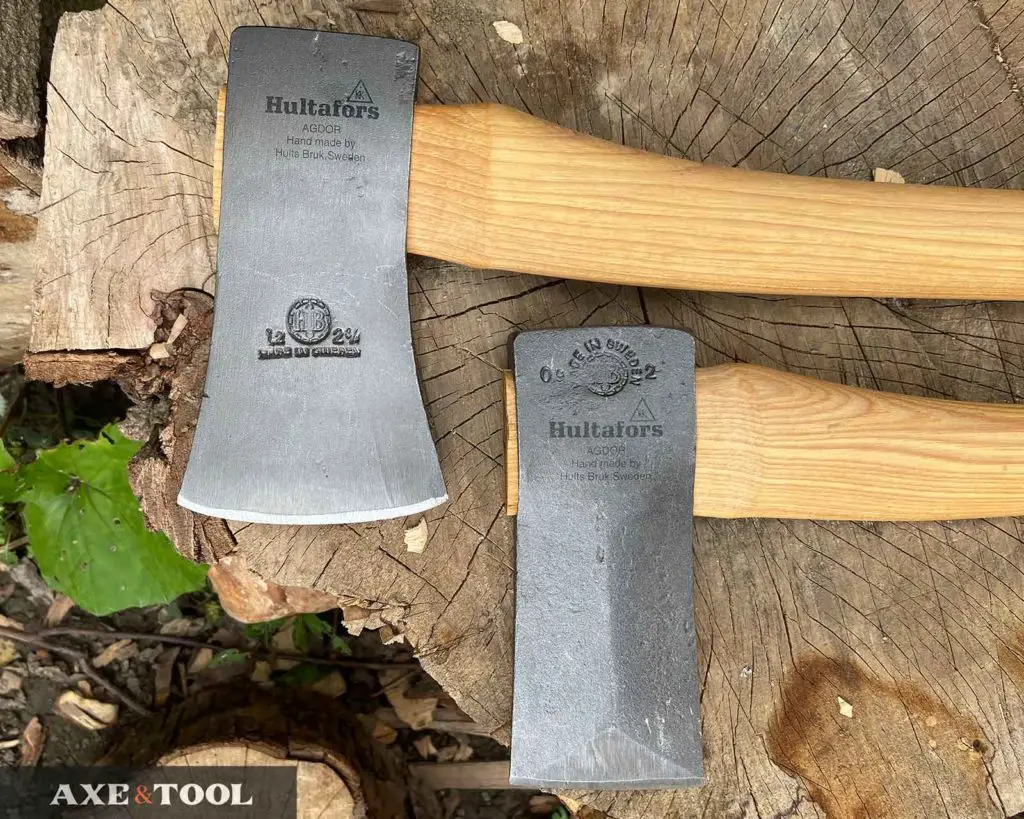
I’m in Canada, and these are my favorite chopping and felling axes.
Outside the US there are WAY more models of Agdor axes. Some are blue like the US, but also some are co-branded Hultafors. They are typically just called Hultafors standard axes (even though Agdor is there too). If they are available to you these are some of the best value axes on the market.
The standard line is affordable and has a ton of models that primarily use the Yankee pattern heads (which are good for all-around use). In my experience, they are a rougher finish than the blue Agdors and don’t come with sheaths, but the fundamental designs and materials are the same.
Premium Axes ($150-$250)
Premium axes offer better materials, and higher fit and finish from the factory.
Gransfors Bruk
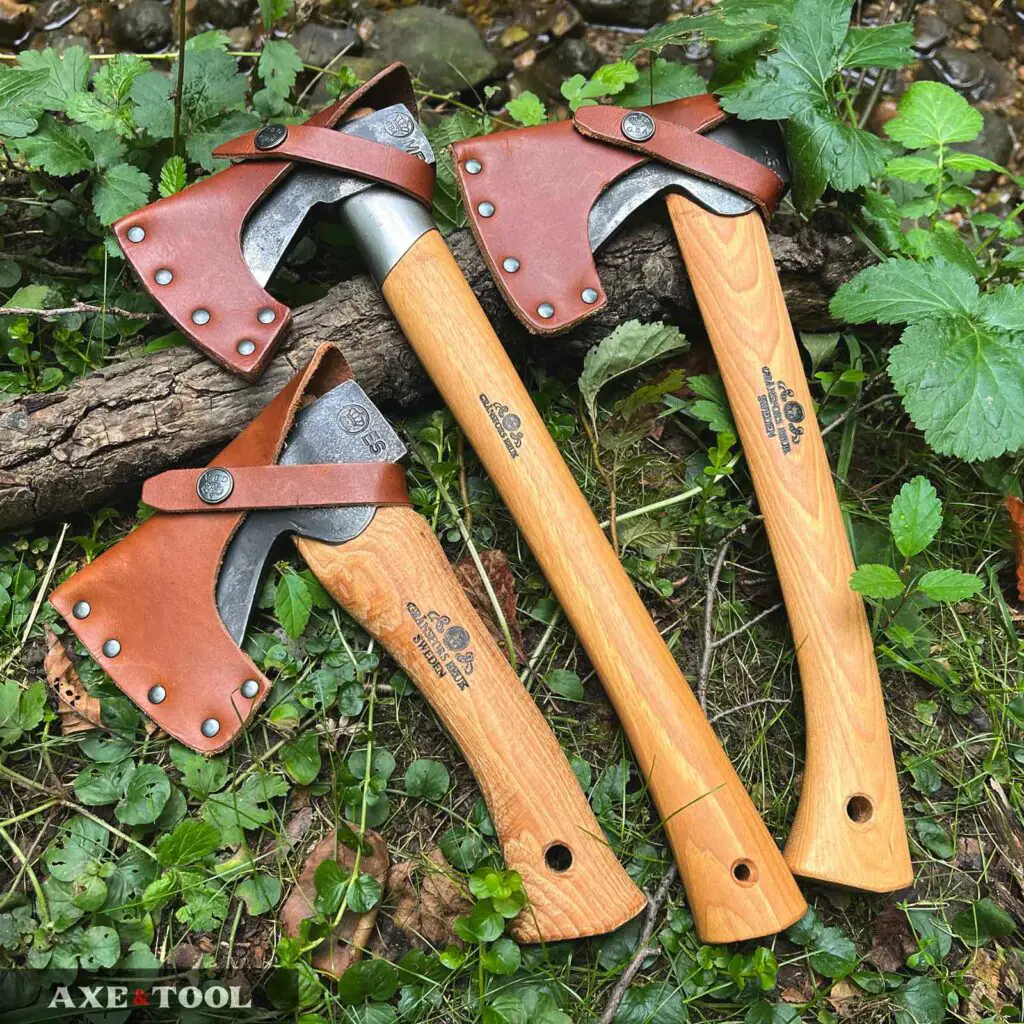
Gransfors Bruk have established quite a name for themselves. Each axe is hand-made and stamped with the blacksmith’s initials, so they do cool well. They are beautiful to look at and feel great in hand. The handles are tumbled in wax after oiling which is a step above even the other axes in this range.
The 19” Small Forest Axe is darling online for bushcraft, but they have a wide range of smaller/lightweight models for hiking, bushcraft, and camping between the 9” and 26”. They do also offer a big 31″ or 35″, 4lb American style felling axe as well, in both straight and curved handles.
They also make some really well-designed splitting axes that are made with the same care and attention to detail.
Pros
Cons
Hults Bruk & Hultafors Premium Axes
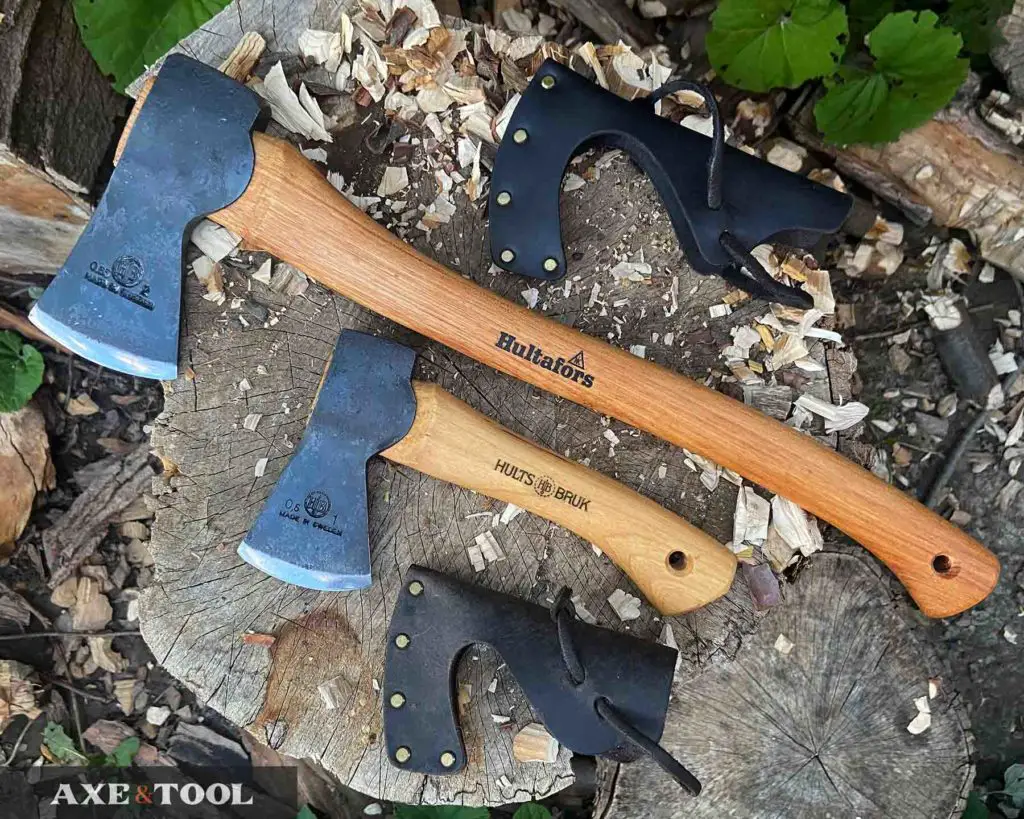
Hults Bruk is the oldest axe producer here (maybe anywhere) starting in 1697. As a company they are my favorite, I own around 10. A mix of vintage and new, standard and premium axes.
Hults Bruks is branded Hultafors outside the US. They are the same axes with different names. Compare here.
Hults Bruk has a similar small axe lineup to Gransfors Bruks, focused on smaller forest axes. The head pattern is similar but unique and comes with an awesome forged black finish. The handles are shaped, but a little rougher (intentionally).

The Anebey is the counterpart to the Gransfors small forest axe, and it has a 2lb head and 20” handle. So you get an extra inch + ¼ lb of steel to get the job done.
I have a detailed comparison of the Gransfors Bruk Small Forest Axe and Hults Bruk Aneby (Hultafors Ekelund) here.
Some people don’t like the HB sheaths which just use a drawstring and not a snap. It’s a little annoying and it does wobble a little, but it also won’t come off – and is durable thick leather.
Pros
Cons
Council Tool Premium Axes

Made in the USA – The Velvicut and Wood Craft lines use 5160 tool steel which is often used for big camp knives and will have much better edge retention than the standard models.
The Velvicut line has a small range of classic American head pattern designs. If you like the Hudson Bay pattern axes – this is the line for you. They are also one of the only higher-end options for a big work axe with the 4lb felling axe. This would make a great all-around homestead work axe.
Pros
Cons
An American-Made Bushcraft Axe
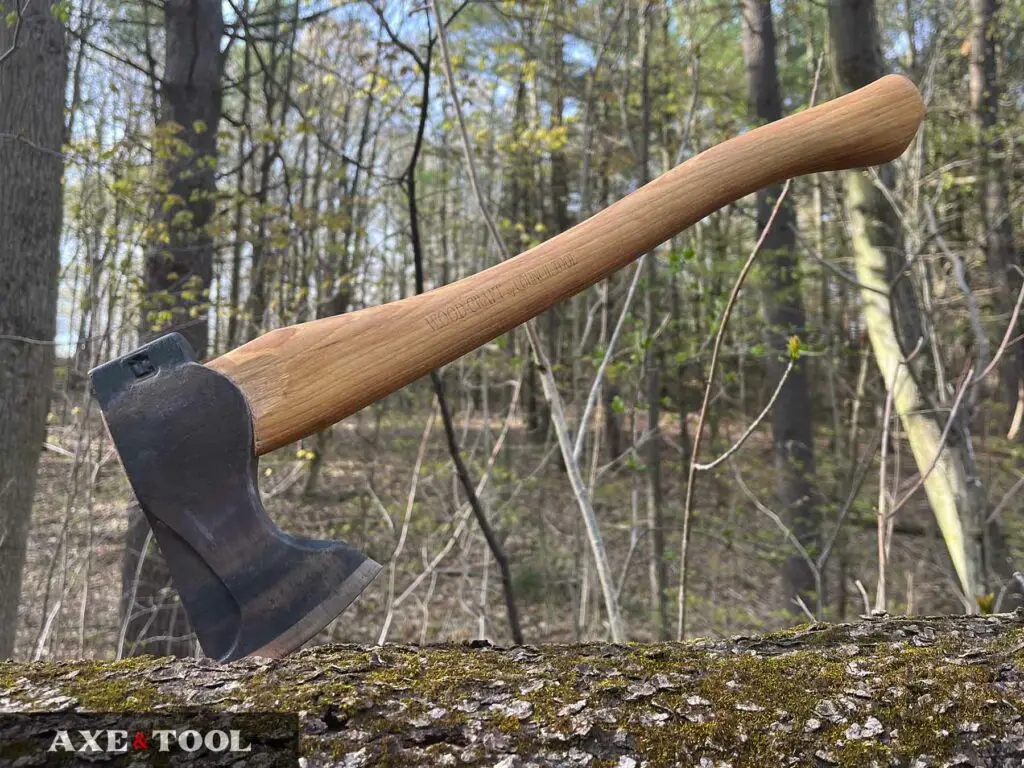
The WoodCraft axe line is going after Gransfors Bruks hard for bushcrafters and campers looking to do a little more. It’s around $70 less than a small forest axe and has a hardened poll to be used as a hammer, bevels, and an undercut area to choke up your grip for carving.
There are three versions: The 19″ Camp Version, a longer 24″ Forest Axe version, and a 16″ carver.
Custom Axes
Most people do not need an axe in this price range. They are for those who are really passionate about axes and craftsmanship but can take up to a year to get your hands on. But they are pretty…
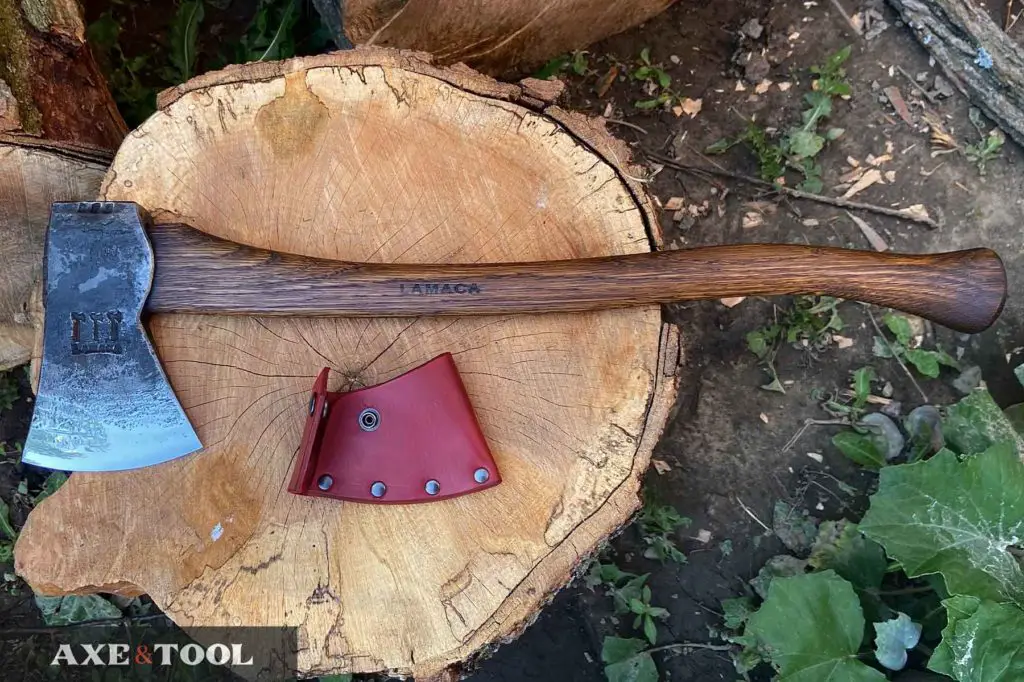
Full disclosure I don’t own axes from all these makers – just one. But they all have big reputations.
The edges are razor-sharp, the handles are perfectly thinned, oiled, and waxed and come with exceptional leather sheaths.
Pros
Cons
Hoffman Blacksmithing
Probably the most famous of the small-batch makers – only a handful of axes are available for pre-order every Monday (one model at a time), and they have a 1 year turnaround time. So you may have to wait a couple of months for the chance to pre-order an axe (they sell out in minutes if not seconds).
Brant and Cochran
Located in Maine, they make only 2 models that utilize the “Maine Wedge” pattern. But they also do a little restoration on the side.
Lamaca Axe
This is the only one of these Artisan axes I own.
These axes are made by a trio of enthusiasts from around the world, who have come together to make great axes. The heads are made in Latvia, the handles made in Canada, and they call come together and get a detailed hand assembly and custom finishing in Idaho.
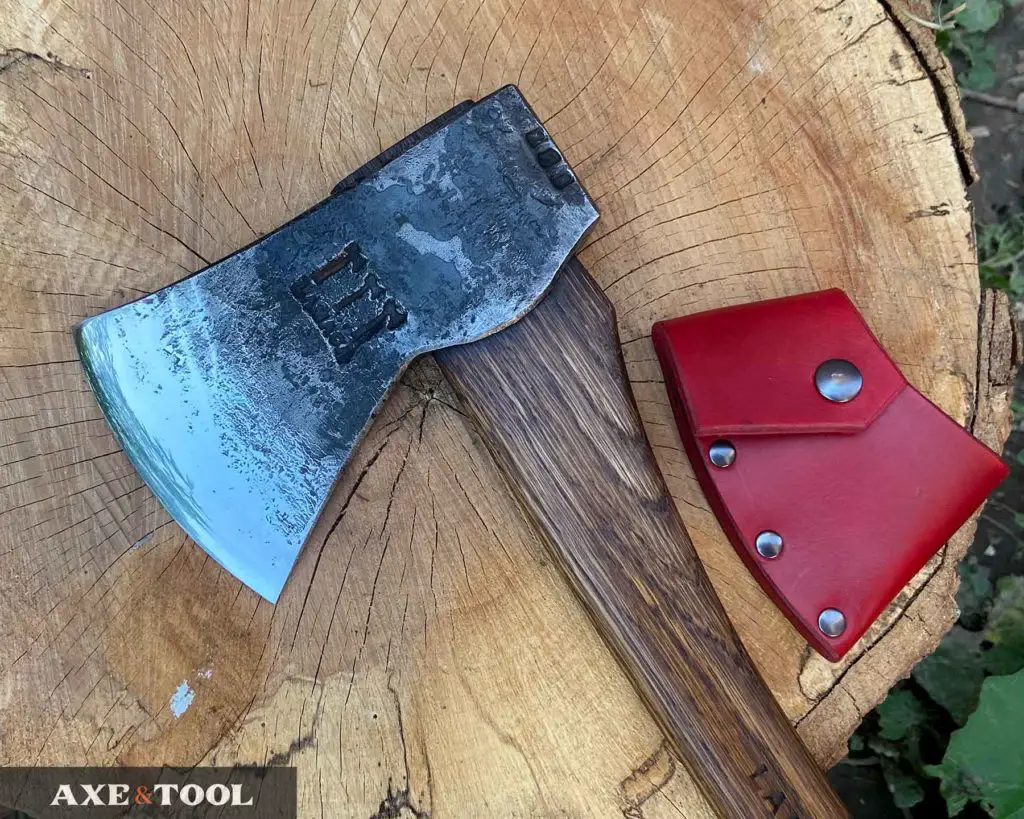
There are three models made, but they have no fixed release schedule (so follow them on Instagram if you are interested).
For my Light Forest Axe, I was able to choose a White Oak handle with an Appalachian Black Walnut Finish.
Custom Restored Axes
Restoring axes is how I really got into the field, and you can buy some beautifully restored pieces – but be prepared for some potentially high prices. Some heads are very collectible, and some aren’t, so you could find a restored axe for $150 or $1000.
If you want to see some really nice work check out Vintage Axe Works. He has a great Instagram presence too and has been on a couple of axe podcasts for the uber-nerds.
Please comment below If I missed something or if you have any questions. I do my best to respond to everyone.
About the author:
About the author:
Jim Bell | Site Creator
I’m just a guy who likes axes. I got tired of only finding crap websites, so I set out to build a better one myself.
I’m also on Instagram: @axeandtool

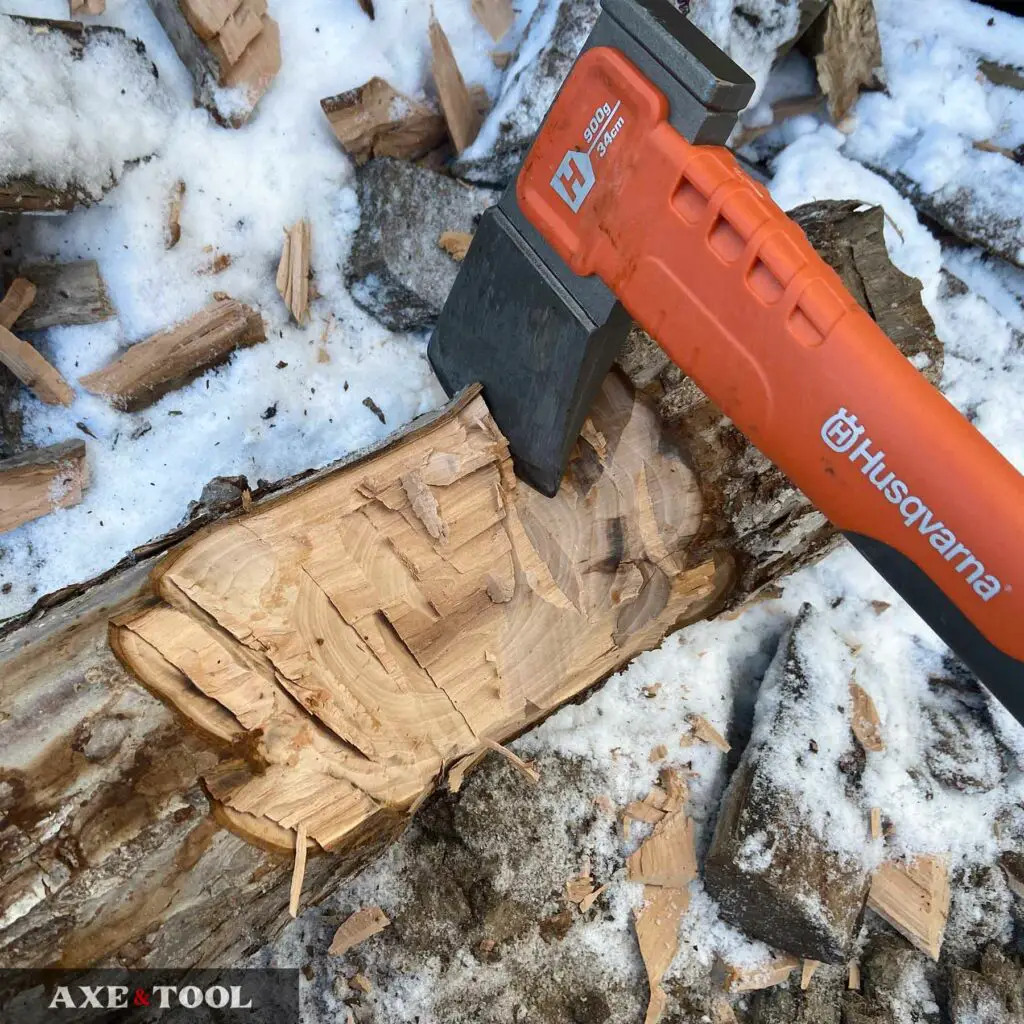
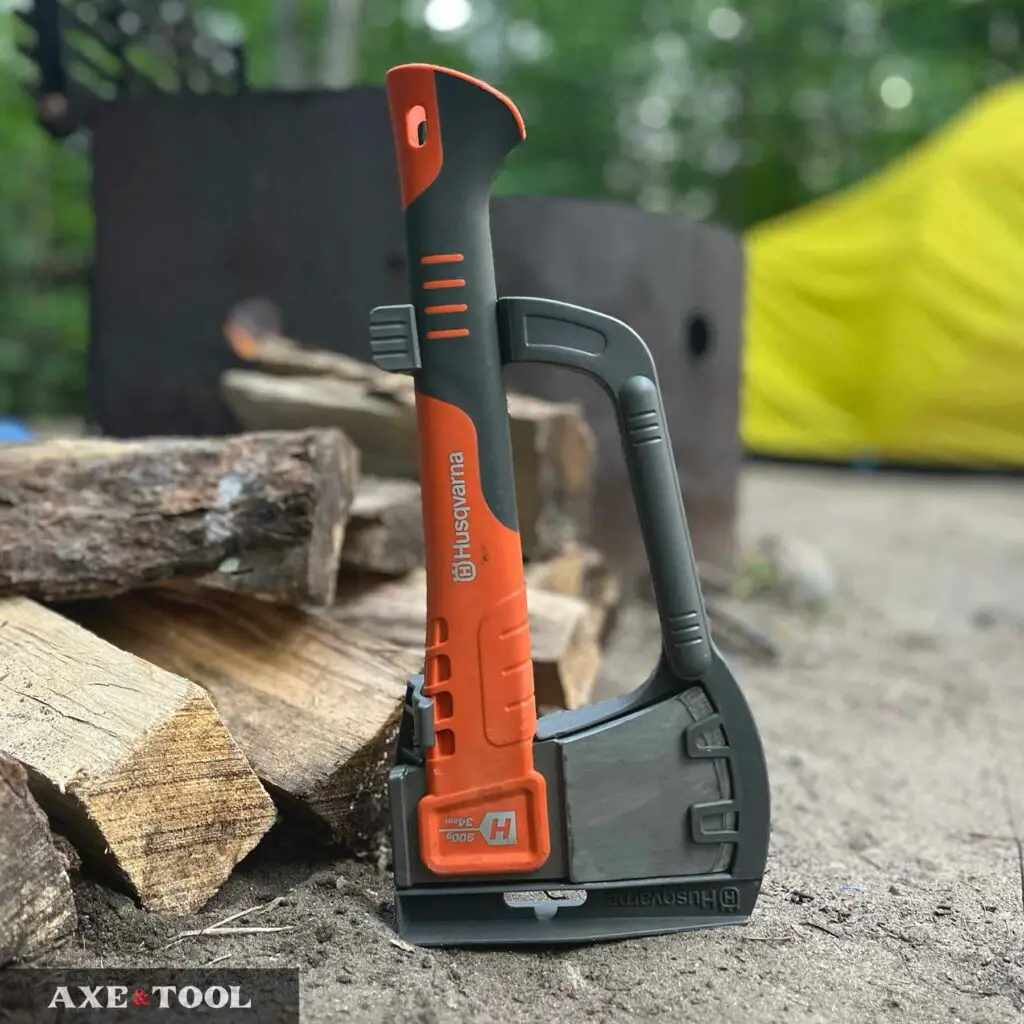

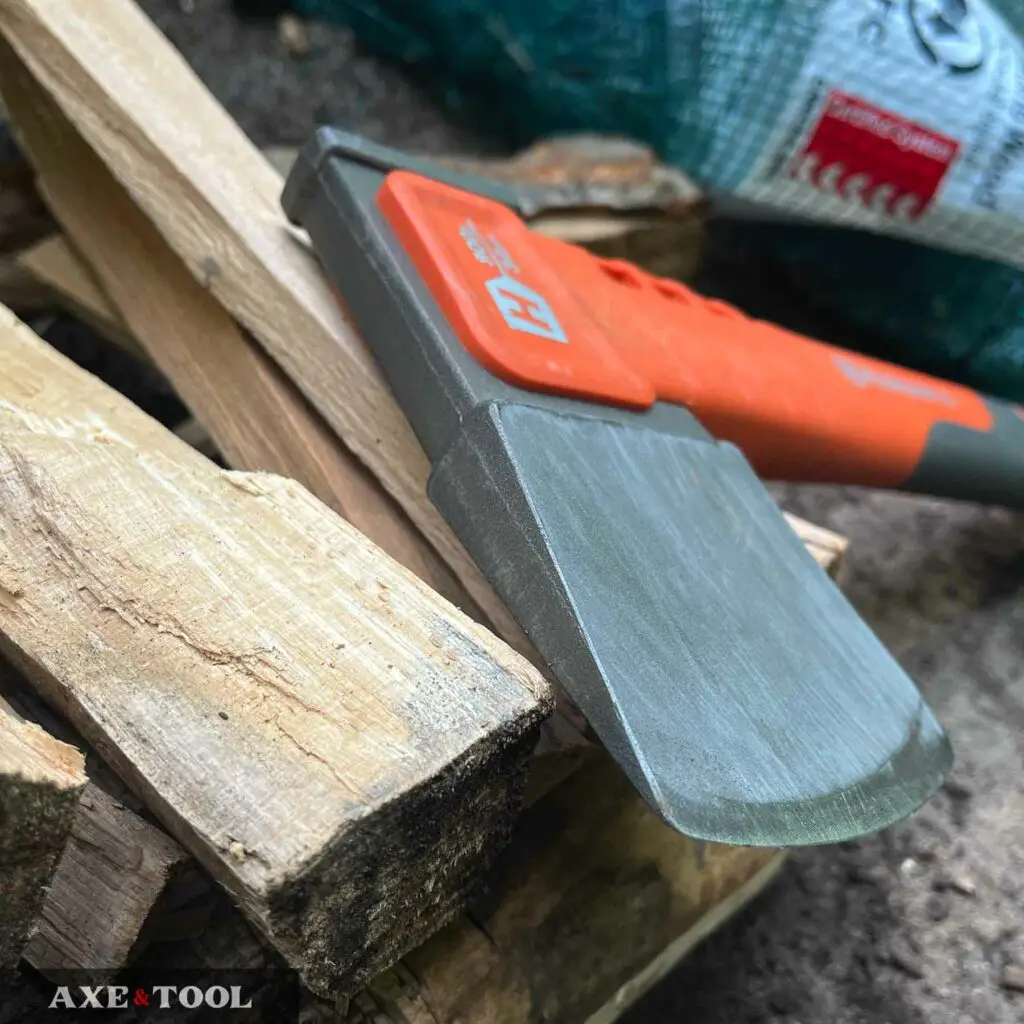



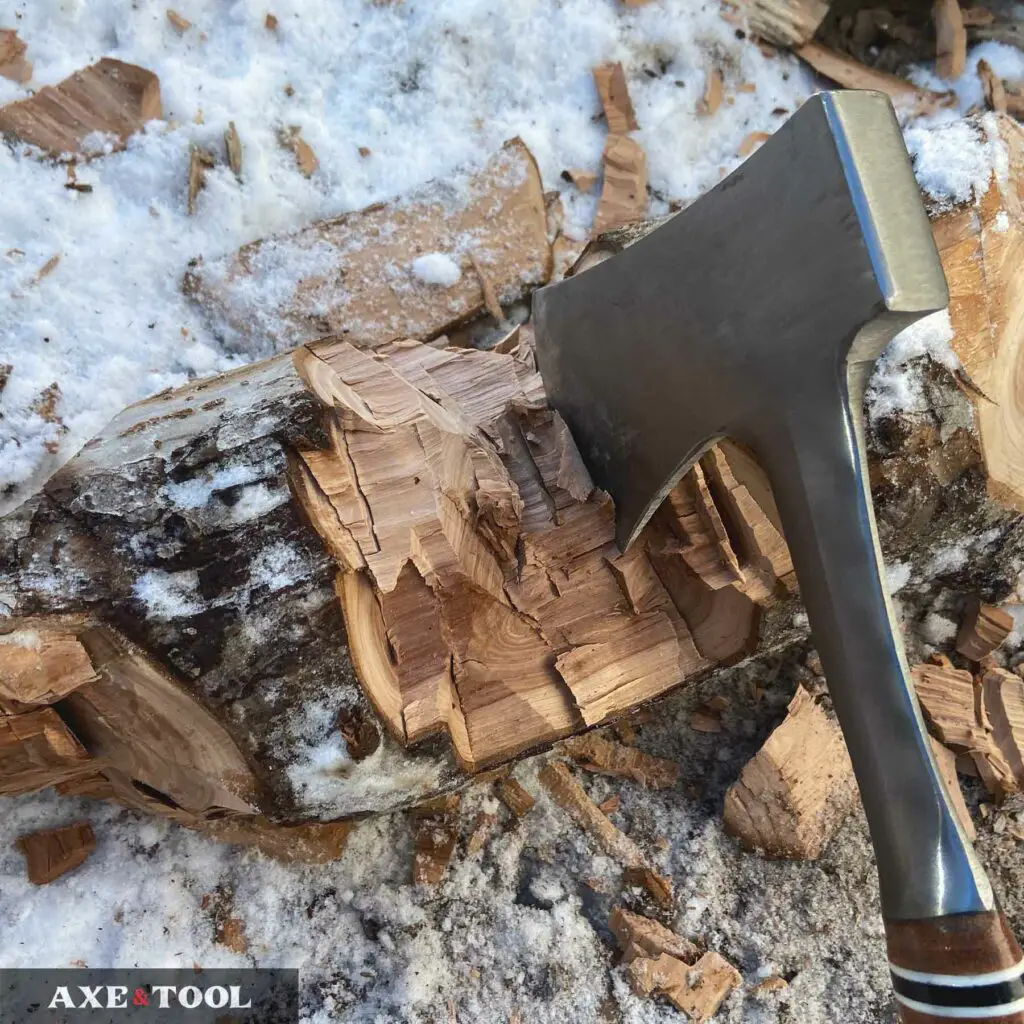

I are a German made axe with a hand written brand I can’t seem to find. 5 letters ending in tis
It’s between a hatchet and axe, I forgot to measure it but it’s about 24-26” long. I’d attach a picture of it was possible
Ox-head Iltis – well known and historic brand, been around a long time. I haven’t spent much time with the recent models (Which is why it’s not on this list right now).
I recently got an Echo Jersey axe for about $70. I think it has a Council Tool head, but I’m not 100% sure. Either way, it’s the best felling axe I’ve ever used.
Awesome! And thanks for the tip, those absolutely look like Council Tool axes. They much have established a new partnership.
Fantastic, interesting, informative and so well presented article, l just ordered Hultafors 1.5kg , 70cm (28″) handle from the Netherlands, €100 all in, l intend to use it primarily to drive plastic wedges for tree felling, and of course any chopping scenarios, often referred to as a forestry axe ( dual purpose ), l favour carrying a light weight felling axe over a heavy sledge or splitting mail, looking forward to working with this Hultafors, Happy Trails to You !!!
Great choice – I’ve got the 1.2kg on the 28″ and I quite like it. Expect to do a little tuning, but it’s well worth in (IMO). Thanks for writing, and feel free to let know how it works for you – always like hearing other opinions.
Your articles are super helpful – much appreciated!
Based on reading several I’m interested in the Agdor axes but having a hard time finding the 28″ Yankee felling axe for sale. As a 6’2″ person, I think a 26″ handle might be a little short. The Montreal version sounds good, but I would like to use it for splitting occasionally as well.
I saw the Scout axe from Helko Werk has similar length/head weight specs. I haven’t seen much in your articles about Helko. How do you rate them?
Should I just go for the Montreal style 28″?
It depends on what you are planning to do. The 26″ axe only has a 2lb head, so it’s a nice light option for trail work. But the 28″ options have 2.5lb (Montreal) and 2.75lb (Yankee) heads, which will be much more capable for serious chopping. So if you want more of a work axe, I would go 28 for sure.
The size and profile of the two heads are very similar, and I have an article on the site that compares them here.
As for Helko – I hear good things, and would like to try them some day. They just don’t sell them in Canada (where I live).
Great site, just bought Flying Fox 16” hatchet from your affiliate link. Been needing a new hatchet and your page has most useful comments and just th information I needed. Thank you… m
Thanks Mark! Enjoy the hatchet – Great choice. It’s honestly one of my favorites.
After big storm last night decided to upgrade my ancient axe with th CS Trail Boss. Thanks again for th great site, advice and links. I appreciate th assist… m
Hi Jim.
Always a great article. Congratulations.
Would you know how hard the Husqvarna axes are in HRC?
Are the new models with fiberglass handles also manufactured by hultafors?
Do these modern models use C55 steel?
Thanks.
Hey Leocir,
I don’t know the HRC of the Husqvarna’s – but it’s good and hard. I could tell when filing, as the file was skipping and it has held strong for years.
The fiberglass models are not made by Hultafors, not sure who makes them but they are certainly softer. No idea what type of steel.